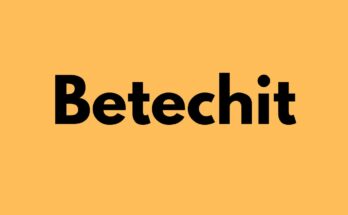Table of Contents
Introduction
Pornography, a ubiquitous presence in contemporary society, exerts a profound influence on individuals and communities worldwide. To comprehend its multifaceted nature, one must delve into its definition, historical evolution, and the intricate interplay between technological advancements, cultural attitudes, and legal frameworks. Equally essential is a comprehensive examination of its effects on individuals, encompassing psychological and social dimensions, as well as the emergent concern of addiction. In light of the pervasive accessibility facilitated by technology, exploring the role of online platforms and virtual reality in pornography consumption is imperative. Moreover, cultural and legal perspectives shed light on diverse attitudes and regulatory approaches across different societies. In confronting the negative impact of pornography, strategies encompassing education, support systems, and legal measures offer pathways toward mitigation and resilience.
Understanding Pornografia
Definition and Types
Pornografia encompasses a broad spectrum of sexually explicit materials designed to arouse and titillate viewers. Its forms range from traditional print media to digital formats, encompassing images, videos, literature, and live performances.
History of Pornografia
Tracing its origins back through centuries reveals a complex tapestry of societal attitudes, moral judgments, and technological advancements. From ancient erotic art to the proliferation of mass-produced pornography in the digital age, its evolution reflects shifts in cultural norms and technological innovation.
The Effects of Pornography on Individuals
Psychological Effects
Research suggests that pornography consumption can influence individuals’ attitudes, beliefs, and behaviors regarding sexuality. Effects may vary widely, from desensitization to unrealistic expectations, depending on factors such as frequency of consumption and personal predispositions.
Social Effects
Pornography’s impact extends beyond the individual to shape societal perceptions and norms surrounding sexuality, intimacy, and relationships. Debates persist regarding its potential contributions to gender inequality, objectification, and sexual violence.
Pornography Addiction: A Growing Concern
Signs and Symptoms
Increasingly recognized as a behavioral addiction, pornography addiction manifests through compulsive consumption, preoccupation, and adverse consequences in various life domains. Symptoms may mirror those of substance dependence, highlighting the need for tailored interventions.
Treatment Options
Effective treatment approaches draw upon principles of cognitive-behavioral therapy, addiction counseling, and relapse prevention. Strategies focus on addressing underlying psychological factors, developing coping skills, and fostering healthy relationships.
The Role of Technology in Pornography Consumption
Online Platforms
The advent of the internet has revolutionized Pornografia access, enabling unprecedented anonymity, affordability, and variety. Online platforms host vast repositories of content, presenting both opportunities for exploration and challenges for regulation.
Virtual Reality Pornography
Emerging technologies, such as virtual reality, offer immersive experiences that blur the lines between fantasy and reality. While promising novel forms of sexual expression, they also raise ethical concerns regarding consent, privacy, and potential addiction risks.
Cultural and Legal Perspectives on Pornography
Cultural Attitudes
Attitudes toward pornography vary widely across cultures, reflecting diverse religious, moral, and social values. Debates surrounding its permissibility, censorship, and cultural impact underscore the complexity of navigating cultural norms and individual freedoms.
Legal Regulations
Legal frameworks governing pornography range from permissive to restrictive, with laws often reflecting prevailing societal attitudes and moral codes. Balancing freedom of expression with the protection of vulnerable populations poses ongoing challenges for lawmakers and advocates alike.
Addressing the Negative Impact of Pornografia
Education and Awareness
Comprehensive sexuality education programs equip individuals with critical thinking skills, communication strategies, and ethical frameworks for navigating pornography’s influence. By fostering media literacy and promoting healthy relationships, education serves as a preventive measure against potential harms.
Support Systems
Supportive communities, counseling services, and peer networks offer vital resources for individuals grappling with pornography-related issues. Destigmatizing discussions surrounding addiction and fostering empathy facilitate healing and resilience within affected populations.
Conclusion
Navigating the complex landscape of Pornografia requires a nuanced understanding of its definitions, effects, and sociocultural contexts. By fostering dialogue, promoting research, and implementing evidence-based interventions, societies can strive toward a balanced approach that upholds individual rights while safeguarding public health and well-being.



